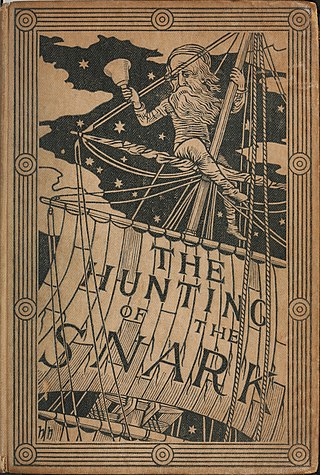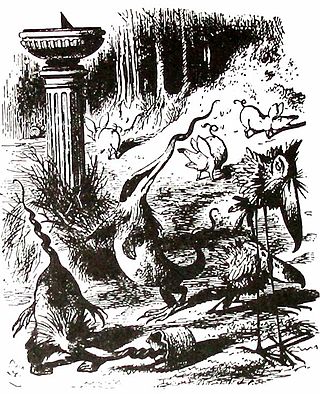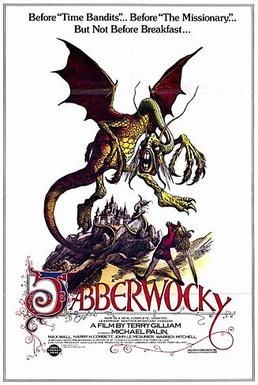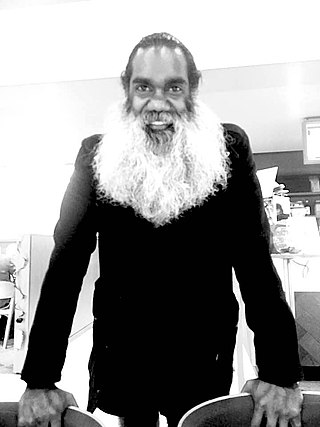
"Jabberwocky" is a nonsense poem written by Lewis Carroll about the killing of a creature named "the Jabberwock". It was included in his 1871 novel Through the Looking-Glass, the sequel to Alice's Adventures in Wonderland (1865). The book tells of Alice's adventures within the back-to-front world of the Looking-Glass world.

Through the Looking-Glass, and What Alice Found There is a novel published on 27 December 1871 by Lewis Carroll, a mathematics lecturer at Christ Church, University of Oxford, and the sequel to Alice's Adventures in Wonderland (1865). Alice again enters a fantastical world, this time by climbing through a mirror into the world that she can see beyond it. There she finds that, just like a reflection, everything is reversed, including logic.

The Hunting of the Snark, subtitled An Agony, in Eight fits, is a poem by the English writer Lewis Carroll. It is typically categorised as a nonsense poem. Written between 1874 and 1876, it borrows the setting, some creatures, and eight portmanteau words from Carroll's earlier poem "Jabberwocky" in his children's novel Through the Looking-Glass (1871).

Nonsense verse is a form of nonsense literature usually employing strong prosodic elements like rhythm and rhyme. It is often whimsical and humorous in tone and employs some of the techniques of nonsense literature.
The poem code is a simple and insecure, cryptographic method which was used during World War II by the British Special Operations Executive (SOE) to communicate with their agents in Nazi-occupied Europe.

A bandersnatch is a fictional creature in Lewis Carroll's 1871 novel Through the Looking-Glass and his 1874 poem The Hunting of the Snark. Although neither work describes the appearance of a bandersnatch in great detail, in The Hunting of the Snark, it has a long neck and snapping jaws, and both works describe it as ferocious and extraordinarily fast. Through the Looking-Glass implies that bandersnatches may be found in the world behind the looking-glass, and in The Hunting of the Snark, a bandersnatch is found by a party of adventurers after crossing an ocean. Bandersnatches have appeared in various adaptations of Carroll's works; they have also been used in other authors' works and in other forms of media.

Sir Robert Murray Helpmann CBE was an Australian ballet dancer, actor, director, and choreographer. After early work in Australia he moved to Britain in 1932, where he joined the Vic-Wells Ballet under its creator, Ninette de Valois. He became one of the company's leading men, partnering Alicia Markova and later Margot Fonteyn. When Frederick Ashton, the company's chief choreographer, was called up for military service in the Second World War, Helpmann took over from him while continuing as a principal dancer.
Nonsense is a form of communication, via speech, writing, or any other symbolic system, that lacks any coherent meaning. In ordinary usage, nonsense is sometimes synonymous with absurdity or the ridiculous. Many poets, novelists and songwriters have used nonsense in their works, often creating entire works using it for reasons ranging from pure comic amusement or satire, to illustrating a point about language or reasoning. In the philosophy of language and philosophy of science, nonsense is distinguished from sense or meaningfulness, and attempts have been made to come up with a coherent and consistent method of distinguishing sense from nonsense. It is also an important field of study in cryptography regarding separating a signal from noise.

Jabberwocky is a 1977 British fantasy comedy film co-written and directed by Terry Gilliam. Jabberwocky stars Michael Palin as Dennis, a cooper's apprentice, who is forced through clumsy, often slapstick misfortunes to hunt a terrible dragon after the death of his father. The film's title is taken from the nonsense poem "Jabberwocky" from Lewis Carroll's Through the Looking-Glass (1871).
"Jabberwocky" is an 1872 nonsense poem by Lewis Carroll, about an encounter between a young boy and a monster called the Jabberwock.
James David Sharman is an Australian director and writer for film and stage with more than 70 productions to his credit. He is renowned in Australia for his work as a theatre director since the 1960s, and is best known internationally as the director of the 1973 theatrical hit The Rocky Horror Show, its film adaptation The Rocky Horror Picture Show (1975) and the film's follow-up, Shock Treatment (1981).

Smashing Time is a 1967 British satirical comedy film directed by Desmond Davis starring Rita Tushingham and Lynn Redgrave. It is a satire on the 1960s media-influenced phenomenon of Swinging London. It was written by George Melly.
— From Lewis Carroll's "Jabberwocky", published as part of Through the Looking Glass
Meryl Tankard is an Australian dancer and choreographer who has a wide national and international reputation.

Twittering Machine is a 1922 watercolor with gouache, pen-and-ink, and oil transfer on paper by Swiss-German painter Paul Klee. Like other artworks by Klee, it blends biology and machinery, depicting a loosely sketched group of birds on a wire or branch connected to a hand-crank. Interpretations of the work vary widely: it has been perceived as a nightmarish lure for the viewer or a depiction of the helplessness of the artist, but also as a triumph of nature over mechanical pursuits. It has been seen as a visual representation of the mechanics of sound.

Matt Lee is an Australian dancer and actor. He has starred in Bootmen, We Will Rock You, Rent, Grease, and Mary Poppins for which he won a Helpmann Award for Best Actor in a Musical. He was a motion capture principal for the Oscar winning film Happy Feet where he brought to life the loveable tap dancing penguin Mumble. He has choreographed for, and worked alongside Paula Abdul, Ricky Martin, Human Nature, Samantha Jade, Hilary Duff and Christine Anu. He was also a judge and choreographer for So You Think You Can Dance.
Shout! The Legend of the Wild One is an Australian musical based on the life of Johnny O'Keefe. It premiered in Melbourne at the State Theatre in December 2000, before seasons in Sydney, Adelaide and Brisbane through 2001. A jukebox musical, it includes songs recorded by O'Keefe and other period songs from the 1950s and 1960s.

Ned Kelly is an Australian musical with book and lyrics by Reg Livermore and music by Patrick Flynn. It tells the story of Australian bushranger Ned Kelly with an eclectic score combining rock opera, vaudeville and burlesque. The original Australian production played in Adelaide and Sydney in 1977 and 1978.

The Wabe is an architecturally eclectic detached house on Redington Road, Hampstead, London, built in 1902–1903 for the academic and mathematician William Garnett. It was subsequently the home of the Canadian explorer Mina Hubbard and her husband, and later of the actor Tom Conti and his wife.

Trevor Jamieson is an Aboriginal Australian stage and film actor, playwright, dancer, singer and didgeridoo player.













